Lifestyle
L-Glutamine and Gut Health: A Life-Changing Supplement

We may receive a portion of sales if you purchase a product through a link in this article.
When it comes to healthy habits, my motto is simple: less is more. But it hasn’t always been that way. It’s taken years of unraveling unnecessary wellness “noise” to realize that at the heart of it all, simplicity reigns supreme. Prioritizing fundamental, time-tested rituals is what fosters genuine well-being. One practice that never gets old? Incorporating intentional supplements. Specifically, those that target multiple bodily functions. Enter L-glutamine! It’s the dynamo nutrient that goes the extra mile. We’re diving into what it is, how it helps (everyone), and where to get it. Plus, get the specifics on L-glutamine and gut health. In the realm of practical wellness, it’s one of the best-kept secrets.
Featured image from our interview with Inge Theron by Teal Thomsen.

What is L-glutamine?
L-glutamine is a powerhouse nutrient. It plays a crucial role in gut health, including building and repairing tissues. More specifically, it’s a type of amino acid (the foundation of proteins). L-glutamine acts as a crucial ally, involved in many functions—especially as it pertains to digestive wellness, brain health, and immunity. It keeps intestines working properly and supports the body’s ability to fight off infections and illnesses.
Do we need L-glutamine?
Yes, but it’s a non-essential amino acid. Meaning (under normal circumstances), our bodies create enough L-glutamine to meet its basic needs. But in the event of stress, illness, or intense physical activity, we require more. Fortunately, certain foods and supplements fit the bill.
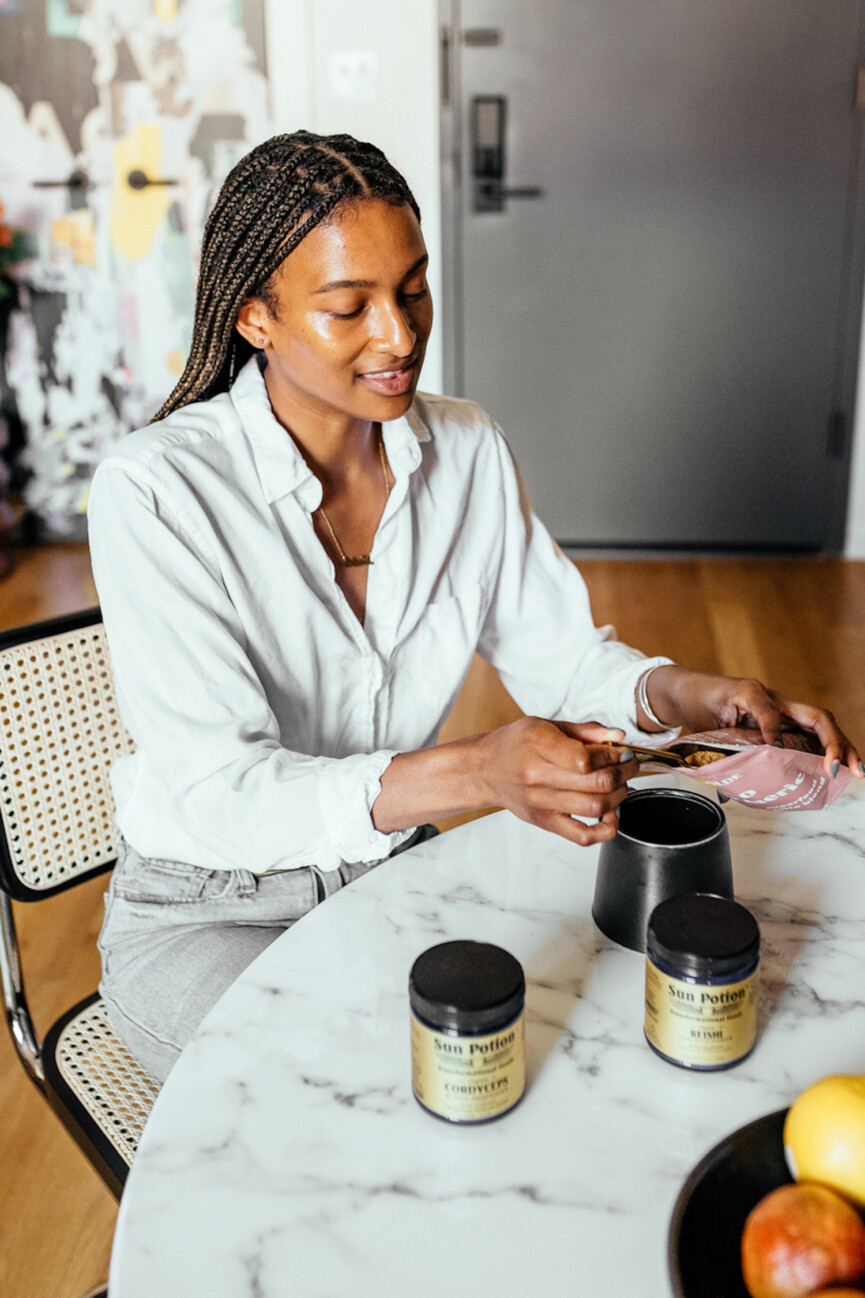
Recommended Daily Allowance (RDA) for L-Glutamine
Fun fact: there isn’t an established RDA for L-glutamine. That said, for general maintenance and gut health, a typical daily dose is 5-10 grams. If you engage in intense physical activity, you may benefit from a higher dosage, like 10-20 grams per day (split into multiple servings). For specific conditions—like IBS or during recovery from surgery or illness—your healthcare provider might recommend doses ranging from 15-30 grams per day.
Reasons to Increase Your L-Glutamine Intake
Sickness and exercise aside, there are plenty of reasons to up your L-glutamine intake. We tapped Jewel Zimmer—the founder of supplement brand, Juna—to get the low-down on why everyone benefits from L-glutamine.

Jewel Zimmer
Jewel Zimmer is the CEO and Founder of Juna. As a certified brain health trainer, Jewel is dedicated to helping women everywhere feel their best. She’s passionate about educating on optimal gut/brain axis, the connection between the two and helping people implement daily habits to reach their health goals. Her mission is to equip individuals with the tools to optimize their health, inspiring a wave of healthier, happier humans.

Why is L-glutamine important?
Because of its reputation for strengthening and repairing the gut lining! And this is vital for our daily exposure to environmental pollutants (which lead to bloating and digestive discomforts). L-glutamine also provides fuel for our metabolism, boosts immune health, modulates inflammation and gut microbiota, and helps regulate cortisol. On top of all of this, it assists in collagen synthesis. Last but not least, it’s a precursor to GABA, the neurotransmitter that calms the brain.
What do you wish more people knew about L-glutamine?
L-glutamine (and other amino acid supplementation) were key to my postpartum mental health, and I don’t think we talk about them enough.
Which Juna supplement is rich in L-glutamine?
Juna’s Gut Therapy. We always say: change your gut, change your brain, change your life.
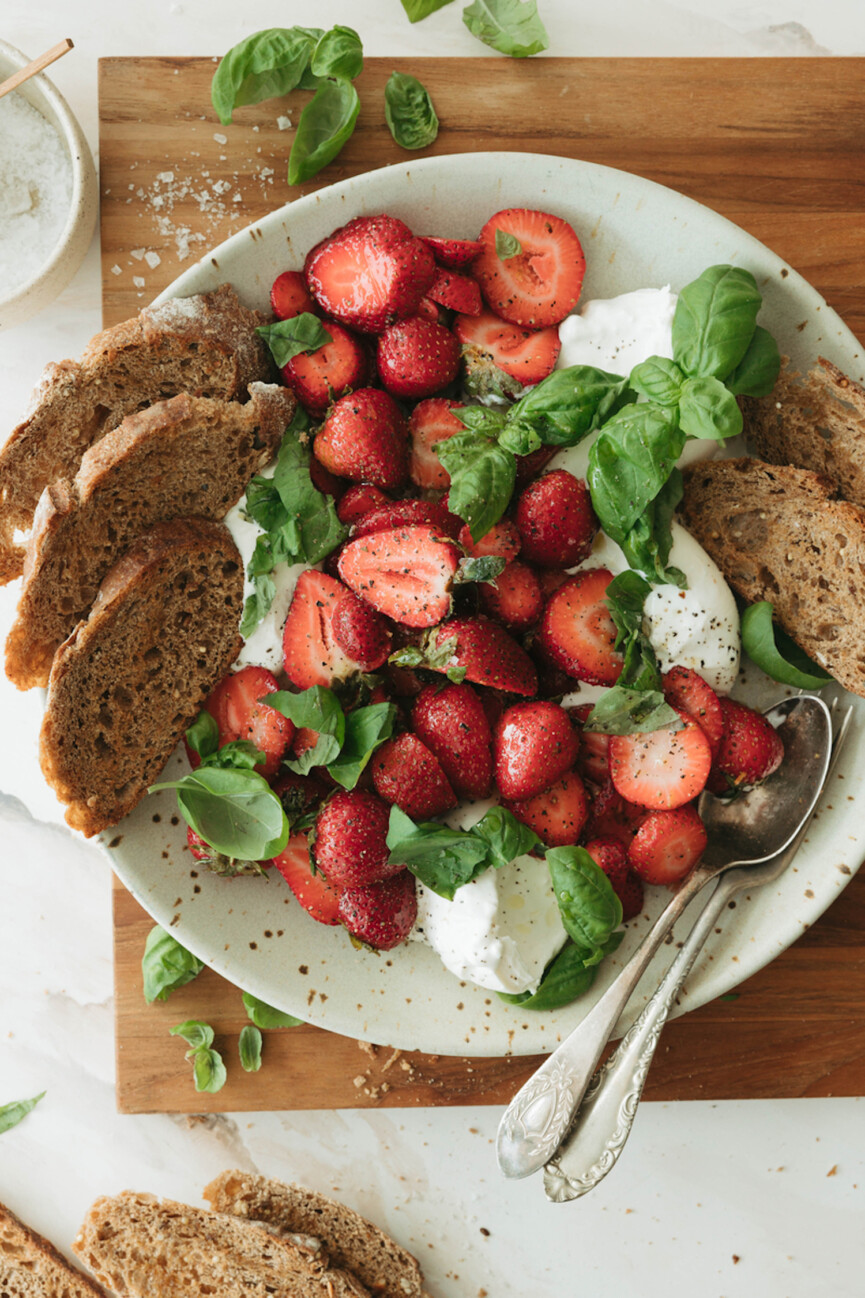
How does L-glutamine support gut health?
While L-glutamine plays a multifaceted role in the body, let’s hone in on gut health. After all, it’s crucial for keeping our digestive system running optimally.
- It’s fuel for intestinal cells. The cells that line our gut use L-glutamine for energy. In turn, L-glutamine helps maintain the integrity of our intestinal lining, which is crucial for preventing conditions like leaky gut.
- It supports immune function. Our gut houses a significant portion of the immune system. L-glutamine aids in the proper function of immune cells in the gut, enhancing our overall immune response.
- It promotes tissue repair. During times of stress or injury, the body’s demand for L-glutamine increases. This is particularly important for those with inflammatory bowel disease (IBD), irritable bowel syndrome (IBS), or other gastrointestinal disorders.
- It balances mucosal barrier. L-glutamine maintains the first line of defense in the gut. And a healthy mucosal barrier is necessary for everything from nutrient absorption to protecting against pathogens.

Sources of L-Glutamine: Diet and Supplements
So, where can you get L-glutamine?
Dietary Sources. Good news! L-glutamine is available in various foods—particularly those high in protein. Rich sources of L-glutamine include both animal and plant-based ingredients.
- Animal products: Meat (beef and pork), poultry, fish, dairy products (milk, cheese, and yogurt), and eggs.
- Plant-based sources: Beans, lentils, spinach, cabbage, beets, parsley, and carrots.
Supplements. L-glutamine supplements come in various forms, including powders, capsules, and tablets. They are widely available and can be a convenient way to ensure adequate intake—especially if you have increased needs or follow a predominately vegetarian or vegan diet.
Are you deficient in L-glutamine?
Unfortunately, identifying an L-glutamine deficiency is a bit complex. That said, certain signs and symptoms may indicate a potential deficiency. Here’s how you can identify if you might need more L-glutamine in your diet:
1. You have digestive issues.
- Frequent diarrhea: Chronic or recurrent diarrhea can deplete L-glutamine levels.
- Leaky gut syndrome: Symptoms such as bloating, gas, cramps, and food sensitivities may be indicators of a compromised gut lining, where L-glutamine is crucial for repair and maintenance.
- Irritable Bowel Syndrome (IBS) and Inflammatory Bowel Disease (IBD): Flare-ups of these conditions can be exacerbated by low L-glutamine levels.
2. Your immune system isn’t as robust as it used to be.
- Frequent infections: If you find yourself getting sick often, it might be due to a weakened immune system, which relies on L-glutamine to function properly.
- Slow wound healing: L-glutamine is essential for cell regeneration and repair, so slow healing of wounds can be a sign of deficiency.
3. You’re losing muscle mass, coupled with fatigue.
- Muscle loss: Unexpected loss of muscle mass, particularly if you’re engaged in regular physical activity, might indicate that your body is using more L-glutamine than it can produce.
- Chronic fatigue: Persistent tiredness and fatigue (especially if it doesn’t improve with rest!) can be a sign of low L-glutamine, as it’s a critical energy source for many cells.
4. You feel chronic stress and anxiety.
- Stress and Anxiety: L-glutamine plays a role in brain function and neurotransmitter production. Low levels can contribute to increased feelings of stress and anxiety.
5. You’ve recently undergone a serious injury or physical trauma.
- Post-surgery recovery: If you’ve recently undergone surgery or suffered from a serious injury, your body’s demand for L-glutamine increases significantly.
- Intense exercise: If you’re an endurance athlete or engage in heavy physical training, you likely have higher L-glutamine needs and can become deficient if your intake doesn’t meet demand.

Testing for L-glutamine Deficiency
While there’s no standard test for L-glutamine deficiency—as it’s not typically included in routine blood tests—chat with your healthcare provider about the following two options: amino acid profiling (a blood plasma test) or clinical assessment (medical history, dietary analysis, etc.).
How to Address an L-Glutamine Deficiency
Whether you’ve noticed certain signs and symptoms—or you’ve had a clinical assessment done, there are a few different ways to address an L-glutamine deficiency.
1. Dietary adjustments
- Increase your protein intake: Ensure you’re consuming enough high-protein foods such as meat, fish, dairy, eggs, beans, and legumes.
- Include glutamine-rich veggies: Foods like spinach, parsley, and cabbage can also boost your L-glutamine intake.
2. Supplements
- L-Glutamine powder or capsules: Consider taking L-glutamine supplements, particularly if you have increased needs due to stress, illness, or intense physical activity. Consult with your healthcare provider to determine the appropriate dosage.
3. Manage stress and recovery
- Stress reduction: Implementing stress management techniques is key to reduce the body’s L-glutamine depletion. Incorporate meditation, yoga, and prioritize sleep.
- Post-exercise nutrition: Ensure you’re getting adequate nutrition and recovery support after intense workouts, which can help maintain L-glutamine levels.
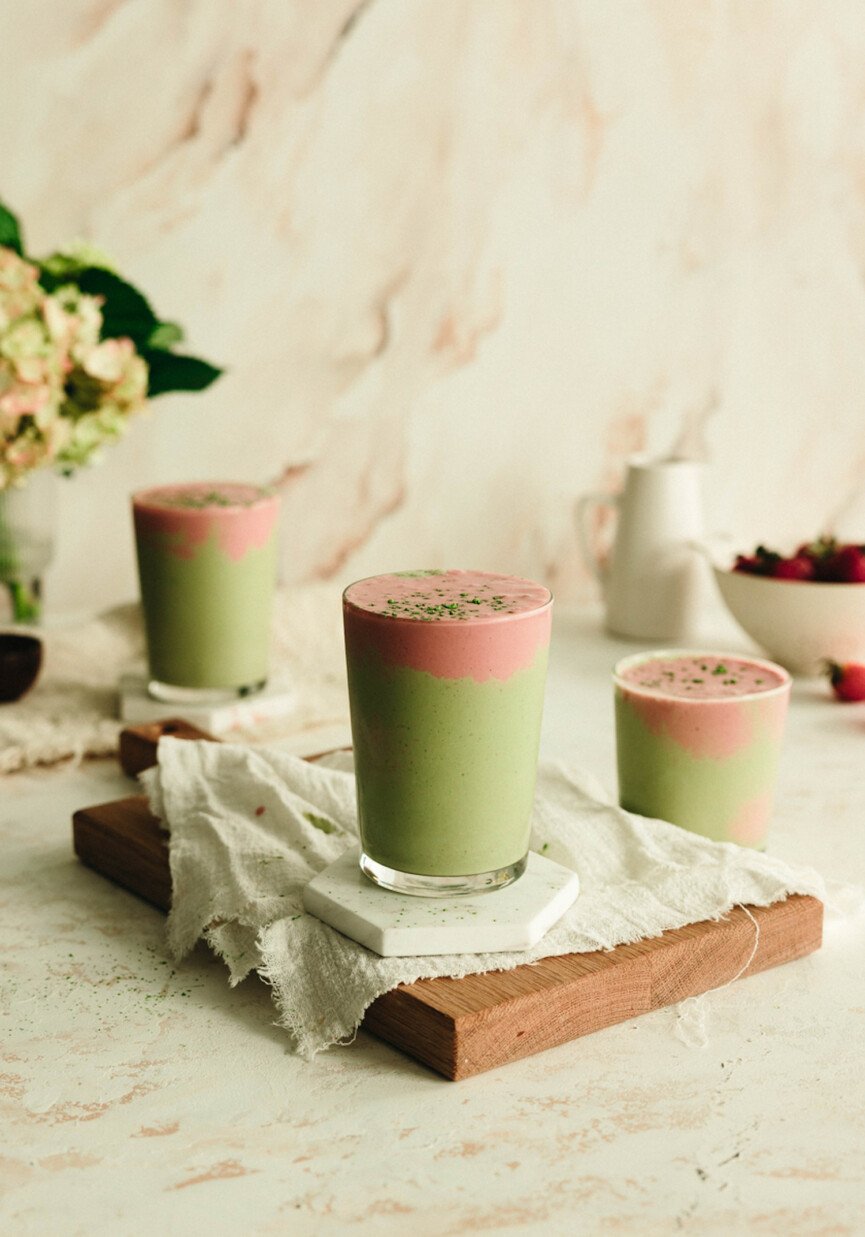
Easy Ways to Incorporate L-Glutamine Into Your Diet
Adding L-glutamine to your daily regimen is simple (and effective!). Pick and choose what works for your needs and lifestyle:
Toss it into your morning smoothie.
Add a scoop of L-glutamine powder to your morning smoothie. This is an easy way to integrate it into your diet without altering the taste significantly.
Add a scoop to your pre- or post-workout shake.
Exercise regularly? Try mixing L-glutamine with your pre- or post-workout shake to aid in muscle recovery and gut health—simultaneously.
Mix it with water or juice.
L-glutamine powder dissolves easily in liquids. Stir it into a glass of water or juice for a quick and delicious intake.
Take a capsule or tablet.
Prefer not to deal with powders? L-glutamine capsules or tablets are a convenient alternative. Simply take them with a meal or as directed by your healthcare provider.

With L-Glutamine, Start Low and Slow
If you’re an L-glutamine newbie, below are a few tried-and-true tips:
Start low and go slow. Begin with a lower dose (i.e., 2-5 grams per day) to see how your body reacts, and gradually increase if needed.
Split doses. To minimize potential side effects, divide the total daily dose into smaller servings taken throughout the day.
Consult your healthcare provider. Always chat with your doctor before starting a new supplement, especially if you have underlying health conditions or are taking other medications.
Monitor for side effects. Keep an eye out for any adverse reactions—digestive discomfort, headaches, or changes in mental clarity.
Can you overdose on L-glutamine?
L-glutamine is generally considered safe when taken in appropriate amounts, but like any supplement, it is possible to consume too much. However, the likelihood of overdose is rare. Keep an eye out for abdominal pain, diarrhea, headaches, dizziness, and confusion.

Change Your Gut, Change Your Life
It’s no secret that by prioritizing digestive health, we lay the foundation for long-term wellness and vitality. Beyond eating enough fiber, incorporating movement, and minimizing unnecessary stressors, supplementing with L-glutamine is key for restoring optimal gut function. This nutrient is worth the shelf space—promise.
Lifestyle
The 12 Best Face Masks for Sensitive Skin (2024)

If you have sensitive skin, it’s almost always a good idea to maintain a simple skincare routine. Typically, all you really need is a good cleanser, serum, and moisturizer, but if you want to add a self-care-worthy treat to your routine, it doesn’t hurt to incorporate one of the best face masks for sensitive skin.
Ahead, you’ll find gentle face mask recommendations, like the super popular (and Camille’s favorite) Summer Fridays Jet Lag Mask and the ultra-hydrating Blue Lagoon Mineral Mask. These face masks will become your new skin saviors without any harsh ingredients. So kick back, relax, and treat yourself to a mini at-home spa day with the best face masks for sensitive skin.
Featured image from our interview with Sanetra Nere Longno.

Our Top Picks
- Camille’s Top Pick: Summer Fridays Jet Lag Mask — $49 at Summer Fridays
- Camille’s Other Favorite: Activist Manuka Honey Mask — $65 at Activist Manuka
- Camille’s Splurge Pick: Blue Lagoon Mineral Mask — $95 at Blue Lagoon
- Best Dermatologist Recommended: Neutrogena Hydro Boost Moisturizing Sheet Mask — $3.59 at Target
- Best Face Mask for Dry Sensitive Skin: Youth to the People Superberry Hydrate + Glow Dream Mask — $52 at Sephora
The Best Face Masks for Sensitive Skin
1. Camille’s Top Pick: Summer Fridays Jet Lag Mask
The Camille Styles team has sworn by this viral mask for years because of how it revives parched and tired skin overnight. The nourishing formula is jam-packed with gentle skin hydrators like glycerin, hyaluronic acid, and niacinamide to replenish and smooth even the most sensitive skin types. Even if your skin is pretty reactive, you can rest assured your complexion will stay calm and happy because this mask is non-comedogenic, fragrance-free, and also has the National Eczema Association’s Seal of Acceptance.
2. Camille’s Other Favorite: Activist Manuka Honey Mask
Honey isn’t just a sweetener to add to your food. Antioxidant-rich Manuka honey, in particular, is known for its powerful healing properties, and Camille loves using this mask from Activist Skincare when she’s experiencing any sort of skin flare-up.
Made with 100% Manuka honey, this luxe yet simplistic formula may help clear up rosacea, eczema, psoriasis, and acne. If you’re not struggling with any of those skin woes, this is still a worthy addition to your routine since it can help promote skin regeneration and leaves behind a healthy glow.
3. Camille’s Splurge Pick: Blue Lagoon Mineral Mask
People travel thousands of miles (and spend thousands of dollars) to step into the geothermal waters of Iceland’s Blue Lagoon. The springs are known to have anti-aging benefits and help enhance the skin barrier. Luckily, you can experience the revitalizing power of the Blue Lagoon from the comfort of your home with this mineral-rich mask. The formula is infused with bioactive Blue Lagoon Seawater, which can help calm your complexion, regardless of whether you use it on your face as an overnight mask or all over your body as a plush restorative cream.
4. Best Dermatologist Recommended: Neutrogena Hydro Boost Moisturizing Sheet Mask
Sheet masks are a quick and easy way to increase hydration, and few compare to Neutrogena’s affordable Hydro Boost mask. Dermatologists constantly recommend this brand (and product) for how it quenches dry skin in contact with hyaluronic acid. The gel texture also adds to the overall treatment since it can soothe and balance skin as you wear it.
Pro tip: Store it in your fridge for 30 minutes before using for extra calming coolness.
5. Best Face Mask for Dry Sensitive Skin: Youth to the People Superberry Hydrate + Glow Dream Mask
If you’re after plump, radiant, soft skin, this mask is a must-have. Filled with antioxidant-rich super berries (think acai, prickly pear, and goji berries) as well as THD Ascorbate (a potent yet gentle form of vitamin C), the thick overnight mask feels like a rich cream that envelops the skin. Come morning, your complexion will look brighter and bouncier, like you just came from a high-end facial.
6. Best Brightening Face Mask for Sensitive Skin: Tatcha Violet-C Radiance Mask
Some people with sensitive skin may have a complicated relationship with vitamin C. While it’s considered the gold standard for brightening and evening out skin tone, the ingredient can oftentimes cause irritation. However, Tatcha crafted the ideal vitamin C-infused mask so those with sensitive skin can reap the benefits sans irritation. Violet-C combines two forms of the antioxidant with the brand’s signature Hadasei-3 complex to deeply hydrate and boost radiance. You’ll see a difference in how you glow after just one treatment.
Pro tip: You can use Tatcha’s “Is This Right For Me?” quiz on the product page to find out if the formulation will gel with your skin type.
7. Best Calming Face Mask for Sensitive Skin: Peter Thomas Roth Cucumber Gel Mask Extreme Detoxifying Hydrator
Redness doesn’t stand a chance against this ultra-calming cucumber gel mask from Peter Thomas Roth. Whether you struggle with rosacea or are dealing with a pesky sunburn, slathering this across your face will provide you with some instant relief.
Botanical extracts like cucumber, papaya, chamomile, bilberry, and aloe vera quickly soothe and draw moisture into the skin, helping speed up the reparative process and warding off any future dryness. Best of all, you can use it either as a quick at-home spa treatment or leave it on overnight for a major boost of hydration.
8. Best Overnight Mask for Sensitive Skin: Kiehl’s Ultra Facial Overnight Hydrating Face Mask with 10.5% Squalane
Every winter, my skin freaks out due to the dry, cold temperatures. As soon as I feel my skin starting to get dry and tight, I pull out this thick balmy mask. Mega hydrators, including squalane—a natural moisturizer that locks hydration into the skin—and glacial glycoproteins make the skin a water magnet to keep it hydrated through even the driest of seasons. Since introducing this into my routine, flakes and dry patches have disappeared for good. Plus, it’s paraben- and fragrance-free, which adds major points for folks with sensitive skin.
9. Best Clay Mask for Sensitive Skin: Mara Spirulina + Ashwagandha Volcanic Sea Clay Detox Mask
Most clay masks can be a bit too stripping for sensitive skin, but this one is an exception thanks to its combination of volcanic ash, algae, and ashwagandha (a plant that can help boost hydration). The creamy clay formula gently detoxes pores and keeps irritation at bay. Rather than feeling tight after washing this off, your skin maintains a soft and supple bounciness courtesy of hydrating honey and soothing green tea.
10. Best Exfoliating Mask for Sensitive Skin: Alpyn Beauty Wild Huckleberry Brightening Peel Mask for Sensitive Skin
Exfoliating is usually a one-way ticket to irritation for those with sensitive skin. However, Alpyn Beauty cracked the code and developed an ultra-gentle mask that delicately sloughs away dead skin, blackheads, and other impurities without leaving you red, raw, or dry. The secret lies in an all-natural eight-acid complex that utilizes good-for-you alpha hydroxy acids (AHAs) and beta hydroxy acids (BHAs) to dissolve dull, dry skin. It also contains chamomile and colloidal oatmeal that help deeply moisturize and soothe the skin to maintain a happy complexion.
11. Best Hydrating Mask for Sensitive Skin: First Aid Beauty Ultra Repair Oatmeal Mask
All it takes is 10 minutes for this mask to work its magic and rebalance the most dehydrated complexions. With colloidal oatmeal as the hero ingredient—a dermatologist-recommended skin soother that can boost hydration and calm eczema flares—this mask helps the most sensitize skin types. Shea butter and sea buckthorn also magnify the restorative benefits of the oatmeal to keep your skin soft and conditioned.
12. Best Face Mask for Acne-Prone Sensitive Skin: Peach Slices Snail Rescue Intensive Wash Off Jelly Mask
Acne-prone sensitive skin can be tricky: You want a lightweight mask that won’t clog pores or cause any adverse reactions while still addressing breakouts. This mask does all of that with the help of snail mucin. The featherlight jelly has become a popular ingredient in the skincare world. It helps repair texture and nourishes every inch of your skin to diminish the appearance of acne scars, discoloration, and dehydration.

Ingredients
Regardless of your skin type, it’s always important to look at the ingredients list before using a new product. However, this is crucial for those with sensitive skin. Some of the most common additives in skincare can be known to cause irritation (including fragrances and essential oils), so you’ll want to ensure the face mask you choose only contains the gentlest ingredients. Colloidal oatmeal, hyaluronic acid, squalane, and cucumber are four ultra-nourishing ingredients that are known to soothe and replenish the skin barrier, making them more than ideal for sensitive skin. The majority of the masks on our list contain at least one of these.
Your Concerns
Is your skin extra dry and flaky? Are you struggling with an acne flare-up or dealing with rosacea? Think about your skin’s specific needs before selecting a face mask. By choosing one catered to the concern you’re trying to address, you’ll get one step closer to achieving clear, bouncy, healthy skin.
If you’re looking to pack on the hydration, look for a mask with mega hydrators like glycerin and hyaluronic acid. The Summer Friday’s Jet Lag Mask contains both. For those with acne-prone skin, the Peach Slices Snail Rescue Intensive Wash Off Jelly Mask will help clear up breakouts and prevent acne scars. As for rosacea, you can’t go wrong with the super soothing First Aid Beauty Ultra Repair Oatmeal Mask.
Pro tip: Allergic reactions can sometimes be a symptom of sensitive skin, so make sure to perform an allergen test prior to using a new product. Apply a small amount of the product to a clean patch of skin on the inside of your arm and leave it on for the instructed time. After 7 to 10 days, if you don’t experience any itchiness, swelling, or redness, you’re good to go. As always, if you have any big concerns, you can talk to a dermatologist to make sure you’re using products that won’t irritate your skin.
Packaging
Most often, masks will come in one of two formats: Either a squeeze tube or a tub. The packaging has no effect on the performance of the formula itself and comes down to personal preference. That said, dermatologists often recommend opting for tubed products, as it’s easier for bacteria to manifest and contaminate products in tubs when you’re scooping the product out with your bare hands. If you opt for a tub, make sure you’re always using clean hands to apply the product.
Prices were accurate at the time of publication.
Related Posts
Lifestyle
How to Have a Good Day in 5 Steps

Move over, New Year, New Me. We endorse (read: highly encourage) a mid-year refresh. In fact, there’s no better time to take small, impactful steps toward a healthier, happier you. After all, today’s habits are tomorrow’s health. And good news! These habits are as budget-friendly (or free) as they come. With that in mind, we’re exploring five practical yet essential practices that will transform your life. If you’ve ever wondered how to have a good day—consistently—hit scroll.
P.S. Circumstances will never be perfect. Rather than wait for that golden moment to change your habits, just choose something (small or significant!) to implement today. Before you know it, you’ll have transformed your well-being. Cheers to seizing July’s momentum.

The Power of Habit
At Camille Styles, we love our daily habits. There’s no denying their profound impact on our lives. They’ve calmed our minds, improved our creative flow, made us more resilient, and helped us pause in the midst of our busy schedules. But what is it about habits that make them so powerful? For starters, our daily habits/rituals shape our future. They create a foundation for long-term well-being and success. Plus, by consistently practicing positive behaviors, we train our minds and bodies to operate more efficiently and effectively.

A Positive Ripple Effect
These habits—be it regular exercise, mindful eating, or consistent sleep patterns—have an incredible ripple effect. They translate into everything from improved physical health to mental clarity and emotional stability. Eventually, these consistent, daily actions lead to dramatic transformations. Moreover, the discipline and structure provided by healthy habits help us navigate challenges with resilience. Without a doubt, they enhance our overall quality of life. And the research proves it.

How to Get Back Into a Routine
We all know good habits reap countless rewards. But if you’ve veered off track, committing (back) to them can feel like climbing Mount Everest. We get it. If you’re overwhelmed by the thought of getting into routine—or for that matter, starting a new one—here’s where to begin.
- Assess your current circumstances. Identify what aspects of your routine need improvement and what changes you want to make. Be realistic!
- Set clear goals. Define specific, achievable objectives for your new routine to give yourself direction and motivation. Take a peek at our steps to make your goals actually happen.
- Start small. Introduce one or two small changes to avoid feeling overwhelmed and to ensure consistency. For example, go for a five-minute walk after you eat lunch and commit to that for one week.
- Create a schedule. Plan your day with designated slots for your new habits, ensuring they fit seamlessly into your daily life. Pop them into your calendar to hold yourself accountable.
- Stay accountable. Speaking of accountability, track your progress and consider sharing your goals with a friend. You can also use a habit tracker for added accountability.
- Be patient and flexible. Allow yourself an adjustment period, and be open to tweaking your routine as needed! Perfectionism isn’t the goal here. Progress is.

All About Habit Stacking
When it comes to getting back into routine, one of the most effective ways to do this is via habit stacking. It’s a game-changer. Habit stacking is a powerful technique where you build new habits by linking them to existing ones. In turn, creating a chain of positive actions. This method leverages the momentum of your established routines. And this helps you integrate new behaviors more seamlessly. For instance, if you already have a habit of brewing coffee every morning, you can stack a new habit, like breathwork, with it. Or before you take your first bite of dinner, express gratitude for one thing that happened earlier that day.
Why does habit stacking work?
If you’re skeptical, hear us out. Habit stacking works because it makes it easier to adopt new behaviors. In essence, it reduces the mental effort required to build new habits—which, as mentioned, can feel taxing. However, by associating new habits with familiar cues, habit stacking requires less cognitive strain. It’s easier to remember whatever new habit you’re implementing! As you consistently perform these actions, positive change is inevitable.

Reality Check: Ditch These Habits
Before we dive into habits that support your well-being, what habits aren’t serving you? Of course, this looks different for all of us (we each have our vices). But generally speaking, habits to ditch include the following:
- Procrastination: Delaying tasks increases stress and reduces productivity. Fortunately, we have the cure.
- Negative self-talk: This undermines your confidence and mental well-being. Constantly comparing yourself to others does this too!
- Overeating junk food: This doesn’t do your physical health, energy levels, hormones, or digestion any favors. Use the notion of “crowding out” these foods and replacing them with more nourishing ones.
- Excessive screen time: If you know, you know—this reduces productivity and affects sleep quality. Consider a dopamine detox by swapping your phone for a page-turning book.
- Skipping exercise: This negatively impacts everything from sleep to blood sugar balance. It’s so important to find movement you enjoy.
- Impulsive spending: This is leads to financial stress and insecurity. If you currently subscribe to a slew of retailer newsletters, hit unsubscribe. Out of sight, out of mind.
- Neglecting sleep: Affects mood, cognitive function, and overall health.
- Multitasking: For most of us, this decreases efficiency and increases errors. Time batch, baby.
- Holding grudges: This doesn’t do you (or your family, friends, or coworkers) any favors.

How to Have a Good Day: 5 Essential Habits to Practice
Once you recognize behaviors that aren’t serving you, you can begin breaking unhealthy patterns (by replacing them with feel-good habits). Elevate your well-being with the following daily practices. Spoiler alert: these all reduce inflammation, fuel proper digestion, improve your self-worth, and so much more.
1. Sunlight
If you’re like me, you love the sensation of warm sun on your skin. I crave it—particularly in the middle of a Colorado winter.
The Benefits: Sunlight is a powerful, natural source of energy and vitality. We need it! Spending time in the sun is a mood-booster, enhances vitamin D levels, balances blood sugar, and regulates your circadian rhythm. It’s key for feeling more alert during the day and encouraging better sleep at night.
How to Implement: Aim to spend at least 15-30 minutes outside each day, preferably in the morning. Whether it’s a walk in the park, sitting on your balcony, or simply opening a window to let the light in, finding small ways to embrace sunlight can make a big difference.
2. Movement
Movement is essential for maintaining physical health, hormone balance, and stable blood sugar levels. To keep your body active and engaged, incorporate more standing and walking into your daily routine!
The Benefits: Frequent movement improves posture, increases energy levels, and enhances your overall physical well-being. It also supports mental clarity and reduces the risk of chronic diseases associated with a sedentary lifestyle. Plus, it’s the secret sauce to mitigating the afternoon slump.
How to Implement: Set a reminder to stand up and move every hour. Take short walks during breaks, use a standing desk (or better yet, a treadmill desk!), or have a post-dinner dance party in your living room.
3. Quality Sleep
Quality sleep is the foundation of a good day. Practicing good sleep hygiene—such as maintaining a regular sleep schedule, creating a restful environment, and avoiding stimulants before bed—can drastically improve your sleep quality.
The Benefits: Good sleep enhances cognitive function, mood, and overall physical health. It allows your body to repair and rejuvenate, leading to more energy and productivity during the day.
How to Implement: Establish a consistent bedtime routine. Aim for 7-9 hours of sleep each night, and create a relaxing pre-sleep ritual, such as reading a book or practicing meditation, to signal to your body that it’s time to wind down.
4. Minimally-Processed Foods
It’s not secret that consuming whole, natural foods nourishes your body with essential nutrients and helps maintain optimal health. In essence, minimally processed foods are those that are as close to their natural state as possible. These include avocados, sweet potatoes, eggs, almonds, herbs, beans, etc.
The Benefits: Eating natural and organic foods improves everything from digestion to longevity. It’s also the catalyst for maintaining a healthy weight, reducing inflammation, and providing the nutrients your body needs to function optimally. Aim to choose organic options when your budget allows.
How to Implement: First and foremost, stick to the perimeter of the grocery store. That’s where you’ll find fewer processed foods (and more produce). Second, read labels. If you do buy packaged items, look for products with a short list of recognizable ingredients. Ultimately, simple swaps, like opting for fresh produce (a banana and a handful of walnuts) over processed snacks, can make a big difference.
Pro tip: as you transition to eating more whole ingredients and fewer ultra-processed foods, make sure to salt your meals appropriately! Your new meals may taste bland(er) because your palate is used to high sodium in most processed foods.
5. Mental Health
Last but not least (but an easy one to neglect): your mental health. It’s crucial for a balanced, happy life. Fortunately, a few minutes go a long way. Practices like meditation, breathwork, and listening to empowering podcasts help manage stress, improve focus, and foster a positive mindset.
The Benefits: Prioritizing mental health enhances emotional resilience, reduces anxiety, and promotes a sense of inner peace. All things we love! Additionally, these practices can improve your overall mental clarity and help you navigate daily challenges with greater ease.
How to Implement: Dedicate a few minutes each day to mental health practices. Start your morning with a brief meditation session, incorporate deep breathing exercises before you hop onto a Zoom call, or listen to a motivational podcast during your commute. Find what works best for you and make it a daily habit.

Start Today for a Better Tomorrow
Implementing these five habits will transform your day-to-day life. Trust. They’ll help you feel more energized, focused, and balanced. With habit stacking in mind, start with one practice and gradually incorporate the others. Remember, consistency is key. By making these habits a part of your daily routine, you’ll set the foundation for a healthier and happier you.
Lifestyle
13 High-Protein Snack Recipes That’ll Keep You Satisfied

We may receive a portion of sales if you purchase a product through a link in this article.
I’ll let you in on a little behind-the-scenes peek into my weekday afternoons. It’s a few hours after lunch, and like clockwork, my stomach starts to grumble. My midday meal isn’t to blame—I’ve made sure to fill my plate with energizing foods. Instead, I’ll chalk it up to the fact that with a morning workout under my belt plus a day’s worth of tasks, my energy is zapped. By mid-afternoon, it can feel like I haven’t eaten in days. Dramatic as that may be, there’s a truth to it. If you’re like me, then you’re familiar with the mid-afternoon hangries. But instead of reaching for another cup of coffee or a cookie to satisfy my sweet tooth, I have another solution. High-protein snack recipes that boost my days with sustained energy.
Listening to your body is one of the best things you can do for your overall health. Tired? Take a break. Stressed? Try saying “no” to what doesn’t serve you. Hungry? Eat something energizing, wholesome, and of course, delicious. I ensured that each recipe below checked off all three boxes. Because even on the busiest work days, we all deserve high-protein snack recipes to look forward to.
Featured image from our interview with Megan Roup by Michelle Nash.

Why We Should Prioritize Protein In Our Snacks
Contrary to popular belief, protein isn’t a one-and-done thing. That’s right—we need to be consuming protein consistently throughout the day to sustain energy, support muscle recovery, regulate hormones, and keep our blood sugar balanced. And when it comes to knowing how much protein we need, it’s different for everyone. The answer is nuanced. Factors such as age, gender, body composition, and activity level all come into play. We recommend speaking with your physician, dietitian, or a nutritionist for a personalized look into a protein plan that’s right for you.
Alongside quality sleep and regular exercise, protein can support women’s health in many ways. Consuming protein helps women build lean muscle mass, produce enzymes and hormones, and create a healthy environment for an embryo to grow. If you want to learn more about how protein supports women’s bodies specifically, our resident wellness expert, Edie Horstman, breaks down the importance of protein for women.

The Best Store-Bought High-Protein Snacks
Brekki Dark Chocolate Oats
I consider oats a perfect breakfast food. Full of fiber, high in protein, and endlessly customizable, they’re my ideal start to the day. Since discovering Brekki’s line of ready-to-eat oats packed with chia seeds, buckwheat, almonds, flaxseeds, and other nourishing ingredients, I’ve now added oats to my everyday, afternoon snacking habits. The amount of protein per serving varies among the different flavors, but I’m obsessed with these dark chocolate oats that pack eight grams in each indulgent bite.
Protein Per Serving: 8 grams
24K Chicken Bone Broth Sachets
PSA: Bone broth is the sexy snack we should all be sipping on. (Vegetarians, this one’s for you.) Each sip soothes digestion while collagen supports healthy nails and glowing skin. Anti-inflammatory turmeric keeps your immunity strong while miso and a mirepoix give this broth a rich, savory flavor. I keep a sachet in my bag at all times for those moments when I need an energizing, hunger-beating boost.
Protein Per Serving: 12 grams
Chomps Original Beef Sticks
Meat sticks are back—but these are a far cry from the Slim Jims of yore. Chomps are packed with smoky, bold flavor and free from fillers, allergens, and added sugars. Made with 100% grass-fed and finished beef, they’re a simple, satiating high-protein snack you can feel good about buying in bulk.
Protein Per Serving: 10 grams
Justin’s Squeeze Pack Classic Almond Butter
Raise your hand in solidarity if you’ve also been known to dive into a jar of nut butter spoon first. Justin’s is for all the salty and sweet enthusiasts among us. These natural almond butter packets require zero stirring—and are perfect squeezed on apple slices or eaten all on their own.
Protein Per Serving: 6 grams
The Only Bean Crunchy Roasted Edamame Beans
Edamame is a powerhouse, plant-based protein source. If you love a little crunch, you’ll be obsessed with these beans’ salty, roasted flavor. They’re a great nut alternative if you’re getting tired of your afternoon almonds.
Protein Per Serving: 11 grams
No Cow Protein Bar, Chocolate Chip Cookie Dough
We recently named these vegan, soy-free, and gluten-free bars as one of the very best protein bars. We’re obsessed with their soft chew, delicious flavor options, and the measly single gram of sugar they contain. (So many protein bars are packed with added sugars.) Oh, and they also boast 15 grams of fiber per serving. Does your protein bar do that?
Protein Per Serving: 20 grams
Perfect Bar Snack Size Chocolate Covered Peanut Butter Protein Bars
For when you need a little treat to keep you going, Perfect Bar has you covered. This snack-sized version of the brand’s larger bars clocks in at 150 calories and five grams of protein—pairing your chocolate craving with hunger-satiating nutrients. Replace your go-to Reese’s with this little delight. You’ll be obsessed.
Protein Per Serving: 5 grams
13 High-Protein Snack Recipes That’ll Keep You Satisfied
After you’ve explored and educated yourself on protein’s importance, it’s time for the fun part: high-protein snack recipes! Read on for the recipes that keep us satiated throughout the afternoon and beyond! Get ready to kiss the 3 p.m. slump goodbye.
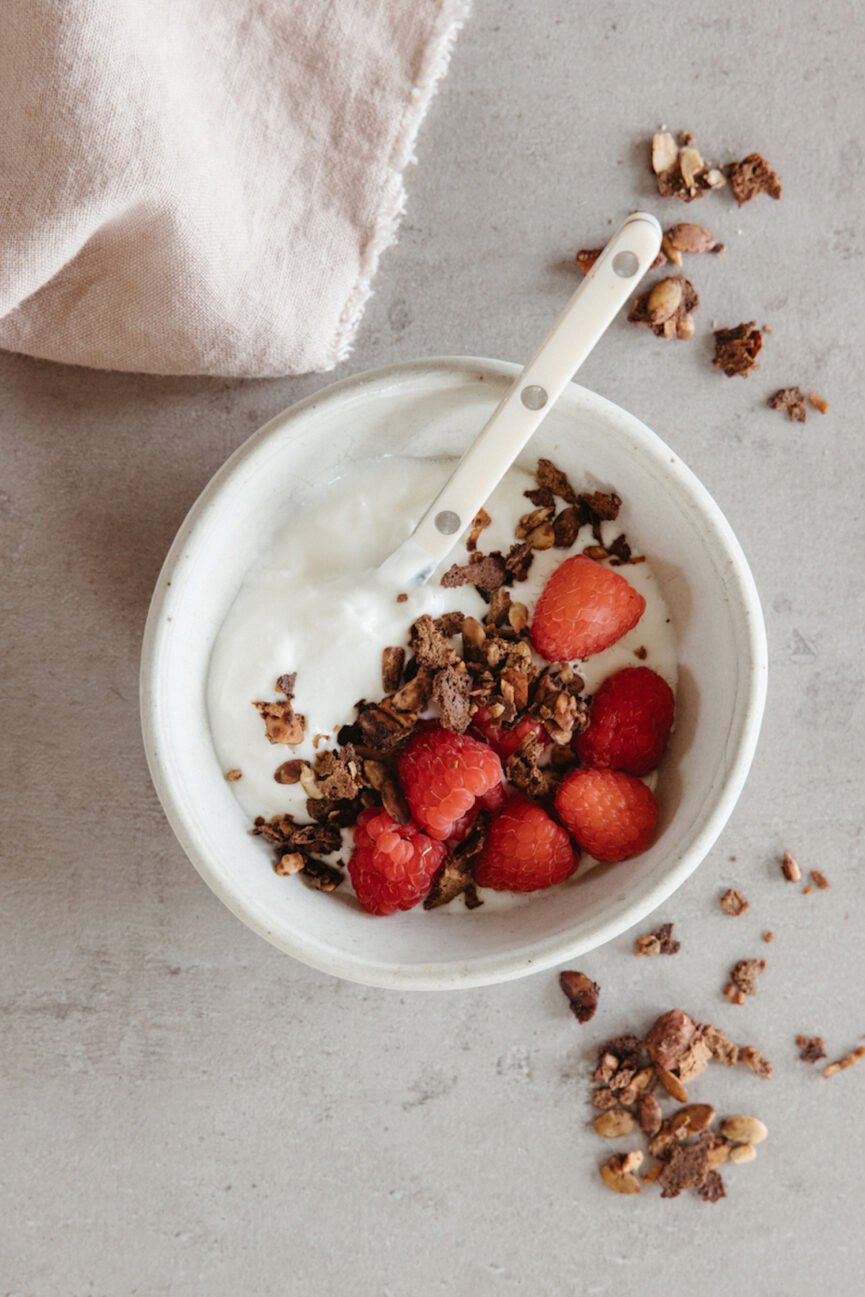
L. Reuteri Yogurt
Why We Love It: As a part of her gut-healing journey, Camille has been eating 1/2 cup of this homemade, probiotic-rich yogurt every day. She’s noticed not only a significant increase in energy thanks to the protein but also improved digestion and mood. Seriously, this yogurt works wonders in helping you reach higher levels of health and vibrancy.
Hero Ingredient: While it may sound complicated, there’s not a lot that goes into making homemade yogurt. Just three ingredients—whole milk, inulin powder, and a probiotic or reserved whey from a previous batch of yogurt—make the magic happen. Let’s give it up to this protein-packed, gut-healing trifecta.
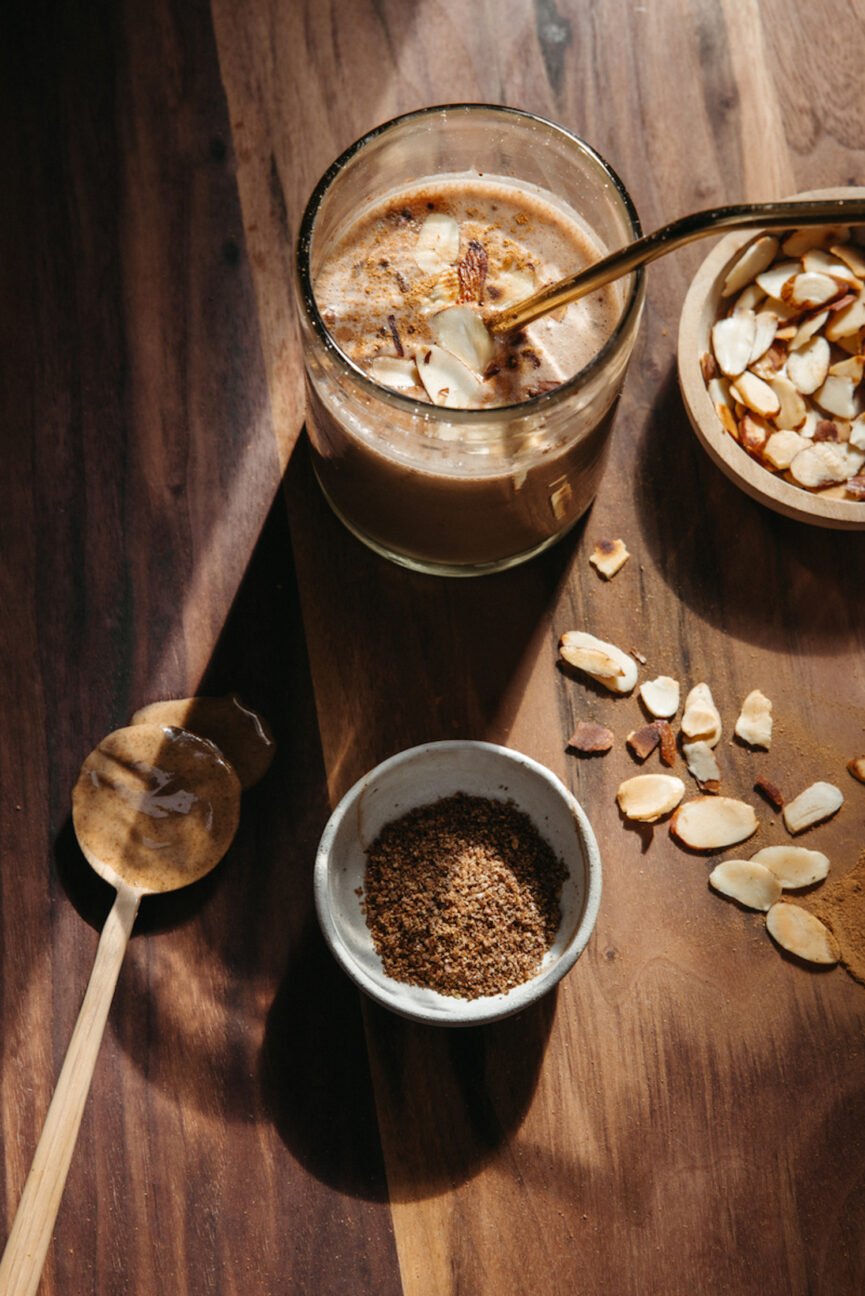
Chocolate Banana Almond Butter Smoothie
Why We Love It: Though they’ve fallen out of favor on our Instagram feeds, I’m a forever smoothie stan. And while I’d encourage mindful eating above all else, smoothies are an easy solve for simultaneous sipping while you work away. Add to that the fact that you can blend up a bounty of good-for-you ingredients and well, everyone should believe in their magic. This chocolatey delicious drink, included.
Hero Ingredient: When it comes to this smoothie, there are countless superfoods to select from. But despite the limitless options, I’d have to go for the Greek yogurt. It’s my go-to when I’m looking for a rich, creamy texture and protein-packed deliciousness. For those who don’t do dairy, any high-protein alternative is great.
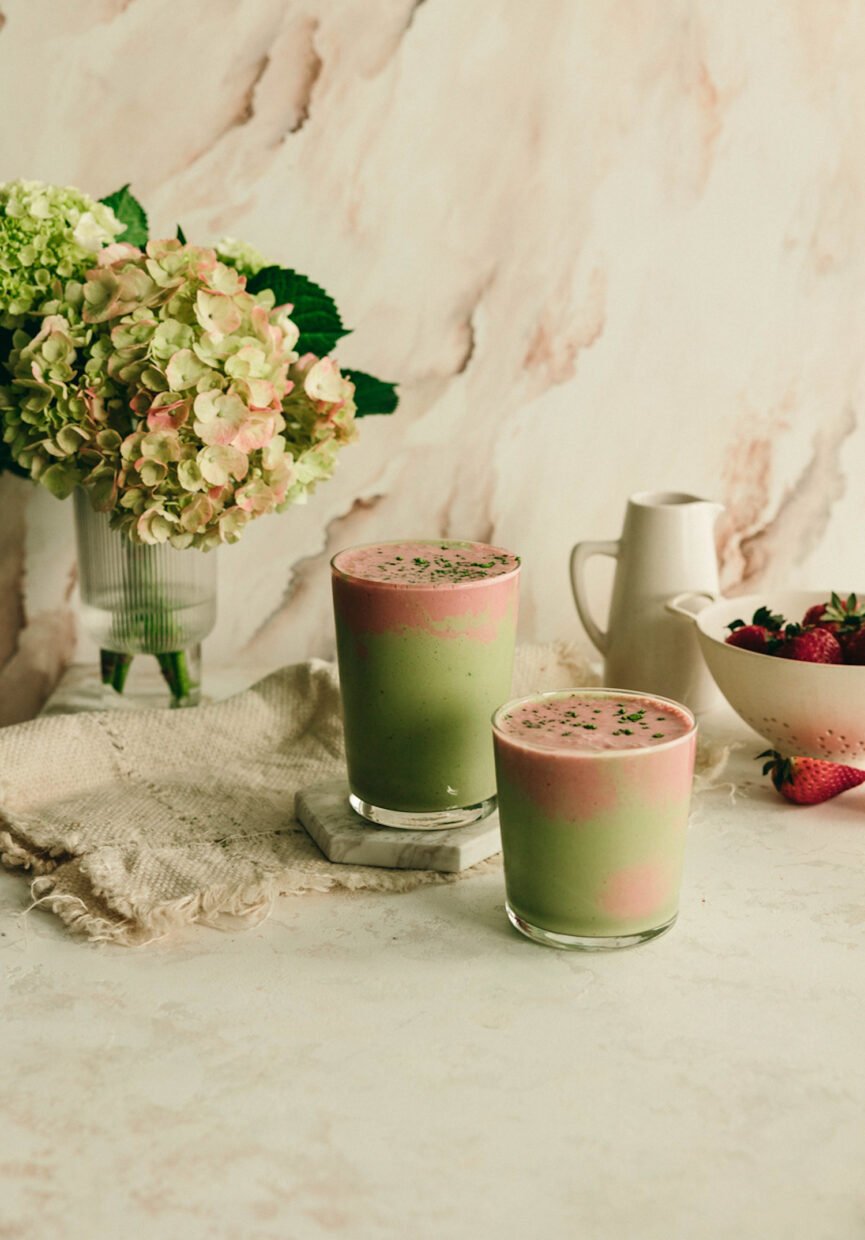
Strawberry Matcha Smoothie
Why We Love It: While most might knock a smoothie for leaving you hungry just a few hours later, this matcha-filled sipper is as satisfying as they come. Yogurt bulks it out with protein, matcha provides sustainable energy, and antioxidant-rich strawberries help regulate blood sugar. You’re welcome to add a scoop of protein powder to make this all the more filling.
Hero Ingredient: This smoothie is packed with so many powerhouse ingredients, but I’ll give it to the coconut milk that keeps this sipper super creamy and filled with healthy fats.
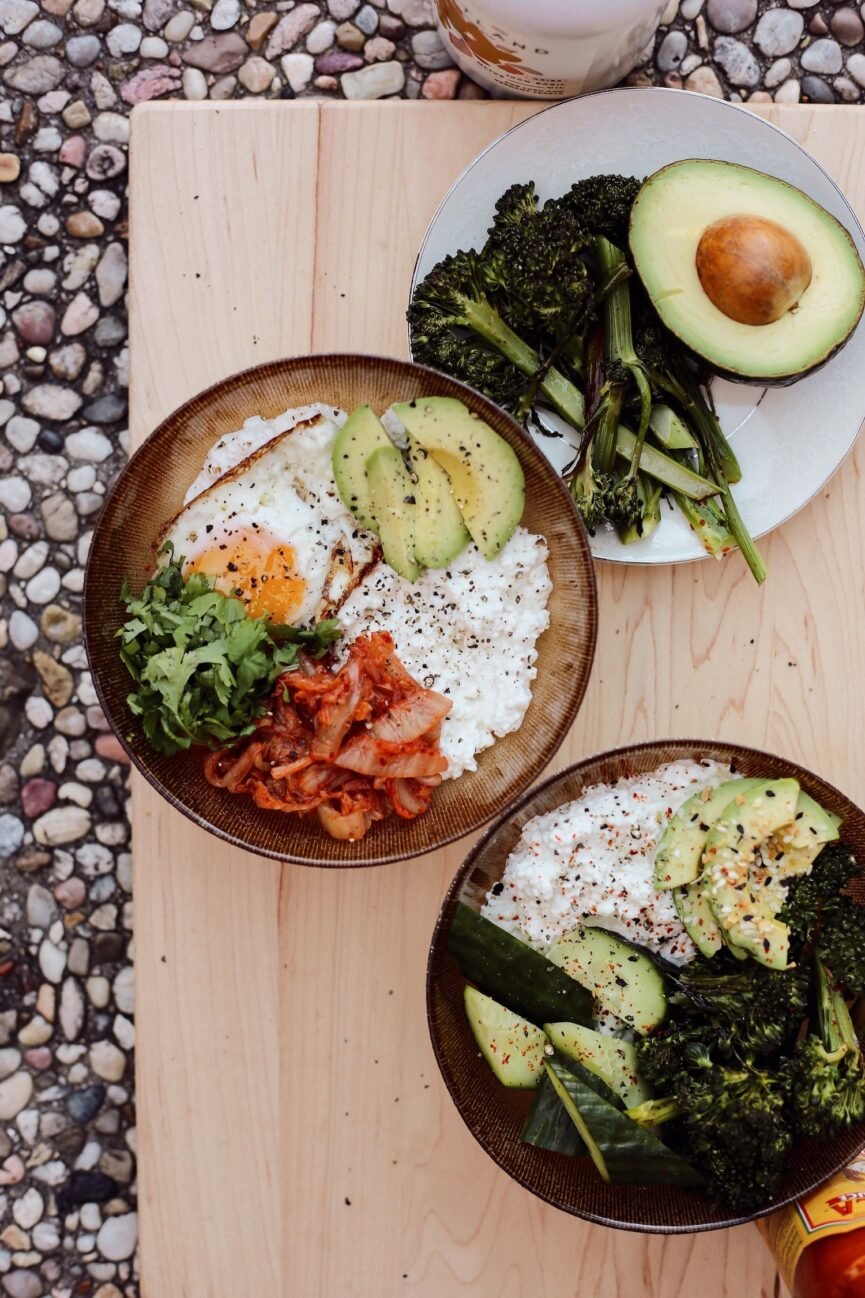
Cottage Cheese Breakfast Bowl
Why We Love It: Maybe I’m in the minority, but I’ve loved cottage cheese my whole life. Thankfully, everyone seems to understand the hype now with recipes spreading far and wide all over social media. While I’m obsessed with cottage cheese ice cream, banana bread, and using it to top my toast, I could truly eat this breakfast bowl every day. It’s slated for breakfast, but you have the freedom to fit the portion size to your afternoon appetite. Simply spoon some cottage cheese in a bowl and customize with your favorite toppings, or let the options here inspire you.
Hero Ingredient: Full of protein and able to lean savory or sweet, cottage cheese has rightfully earned it’s spot in the limelight.
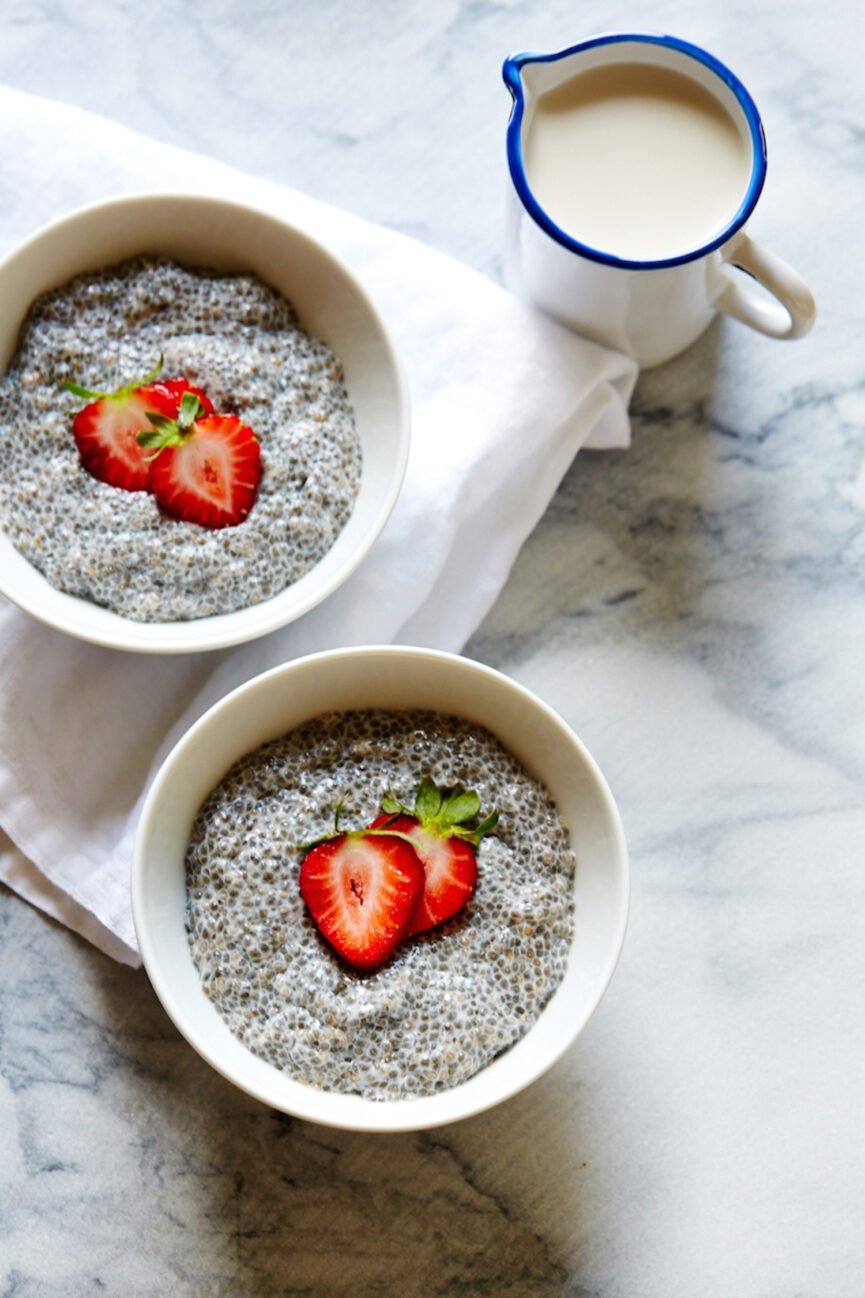
Vanilla Chia Pudding With Chestnut Honey & Berries
Why We Love It: Contrary to popular belief, high-protein snack recipes don’t always have to be savory. And while I tend to reserve chia pudding for breakfast, it’s time I let it shine during other meals of the day. What can definitely be enjoyed as a snack can totally double as dessert. It’s light and literally zero effort. A magic pair.
Hero Ingredient: A little honey or maple syrup keeps things just sweet enough.
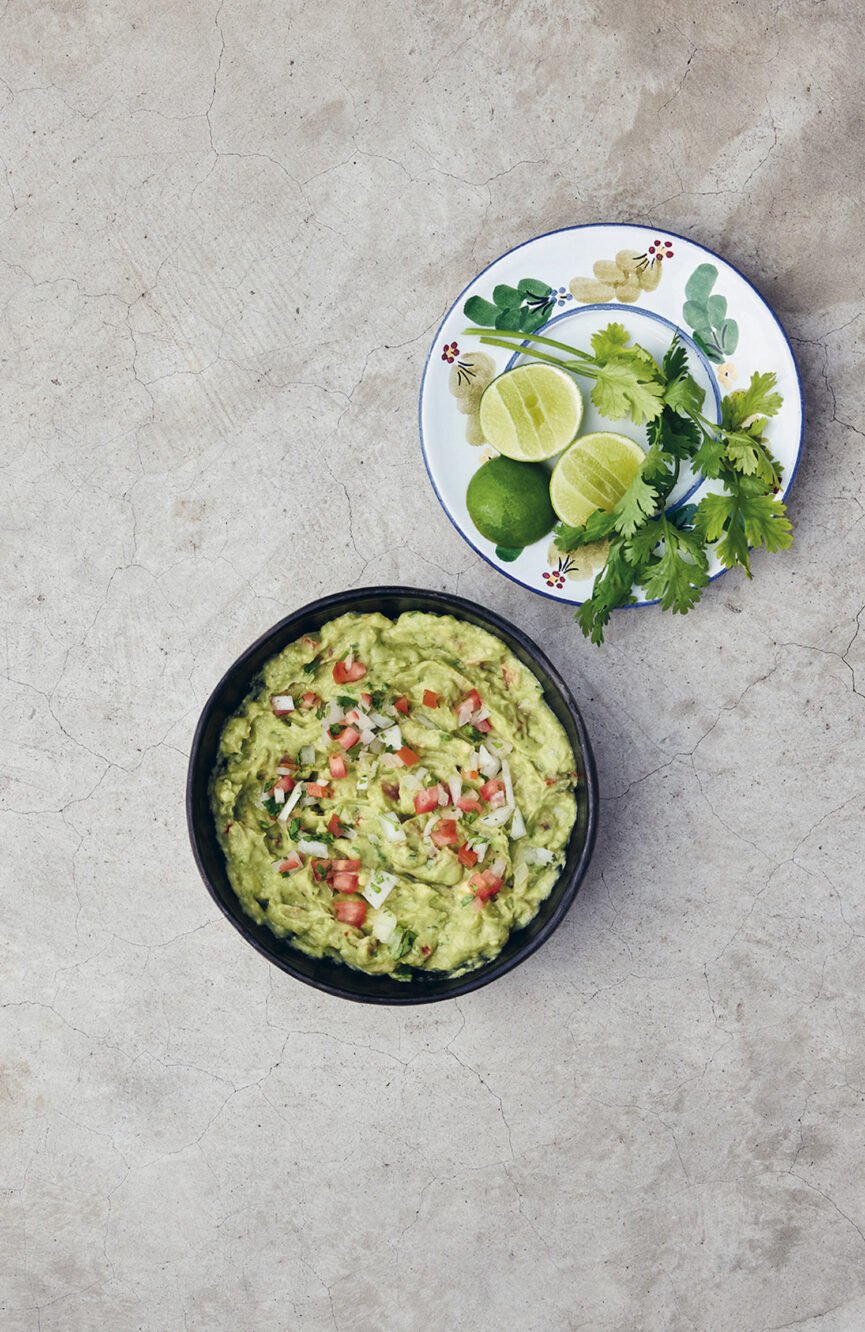
The Only Guacamole Recipe You Need
Why We Love It: Plenty of recipes claim to be the be-all and end-all of guacamole. But trust me, this perfectly creamy, perfectly spicy take is it. This recipe keeps things simple with a minimal mix of ingredients. Avocado (of course), plus a red onion and chile for heat. Add to that a few other choice components, and you have the easiest crowd-pleasing appetizer that’s perfect for any party. You’re also fully welcome to keep it all to yourself. I’ll definitely be doing the same.
Hero Ingredient: The lime juice cuts through and balances the richness of the avocados beautifully.
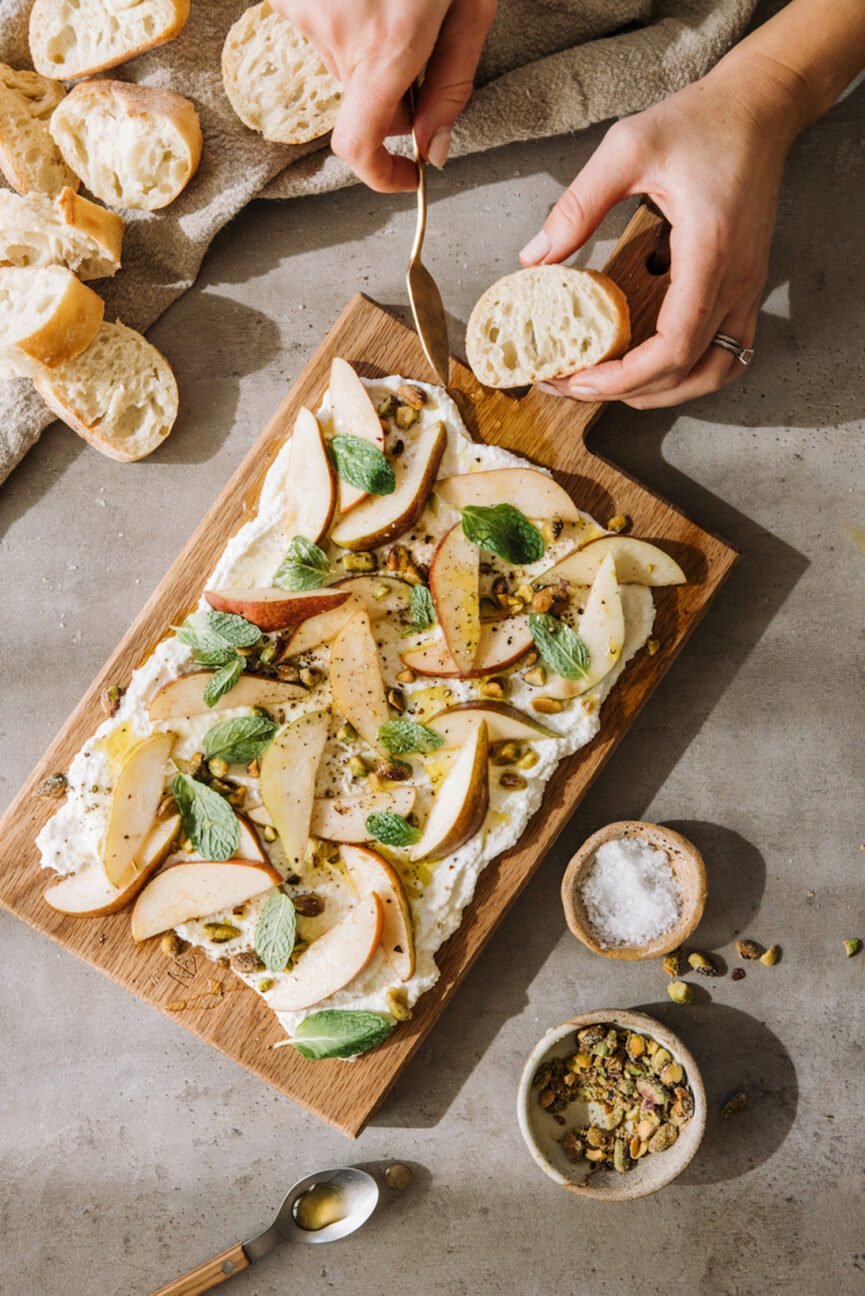
Ricotta with Pears and Honeyed Pistachios
Why We Love It: Sometimes, you just need a gorgeous, aesthetically pleasing snack to brighten up your afternoon. When that particular craving hits, this is always my go-to. It calls for only seven ingredients (counting the crusty bread) and couldn’t be simpler to whip up. As far as high-protein snack recipes go, this might just be the prettiest.
Hero Ingredient: Camille calls ricotta the “little black dress of your cheese drawer.” I couldn’t agree more.
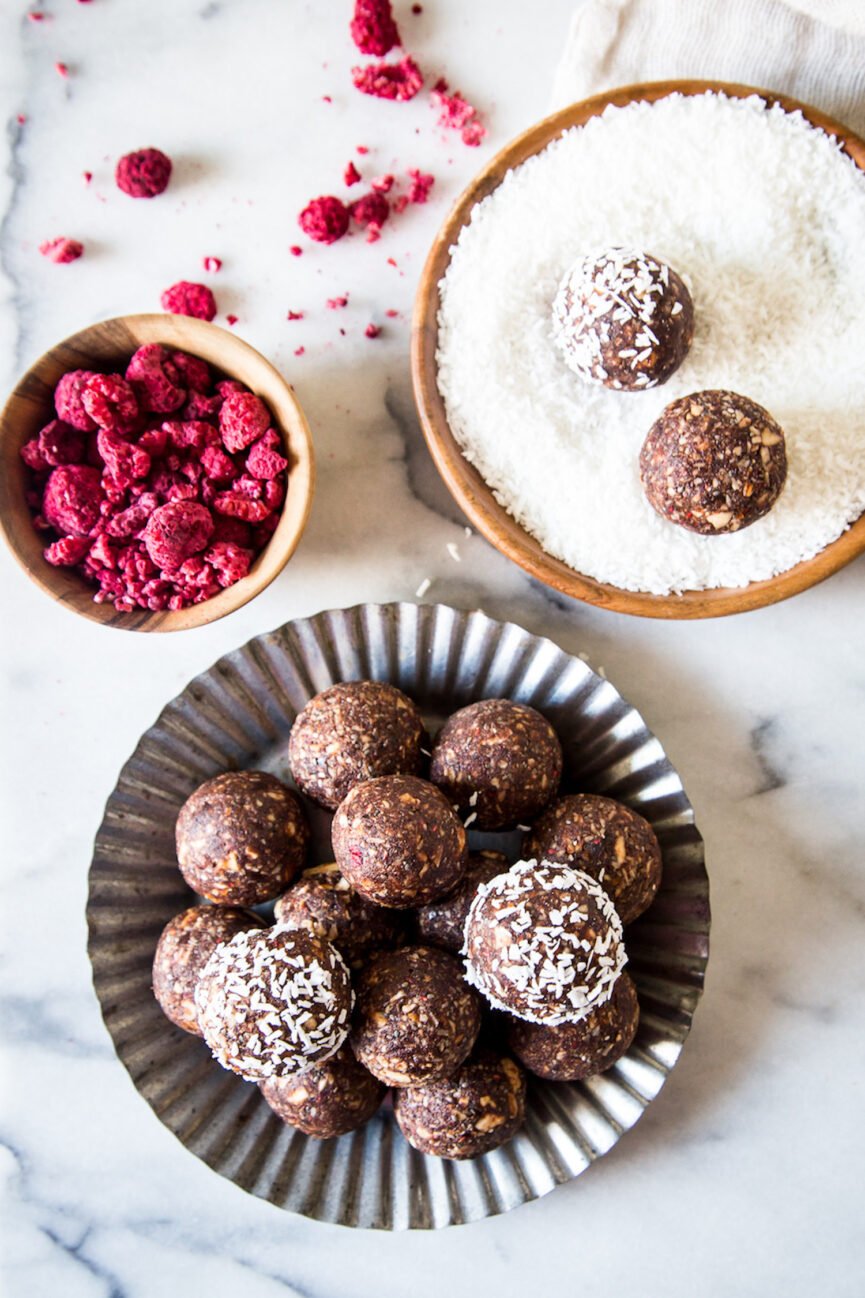
Raspberry Cocoa Energy Balls
Why We Love It: As someone who always seems to be in motion, my favorite high-protein snack recipes are those that I can take with me on the go and pop in my mouth as I please. So it seemed like my snacking dreams had become a reality when I discovered these energy balls. The good news? They’re almost as simple to make as they are to eat. It’s your food processor that does all the work.
Hero Ingredient: Sticky and sweet, dates are my forever fave.
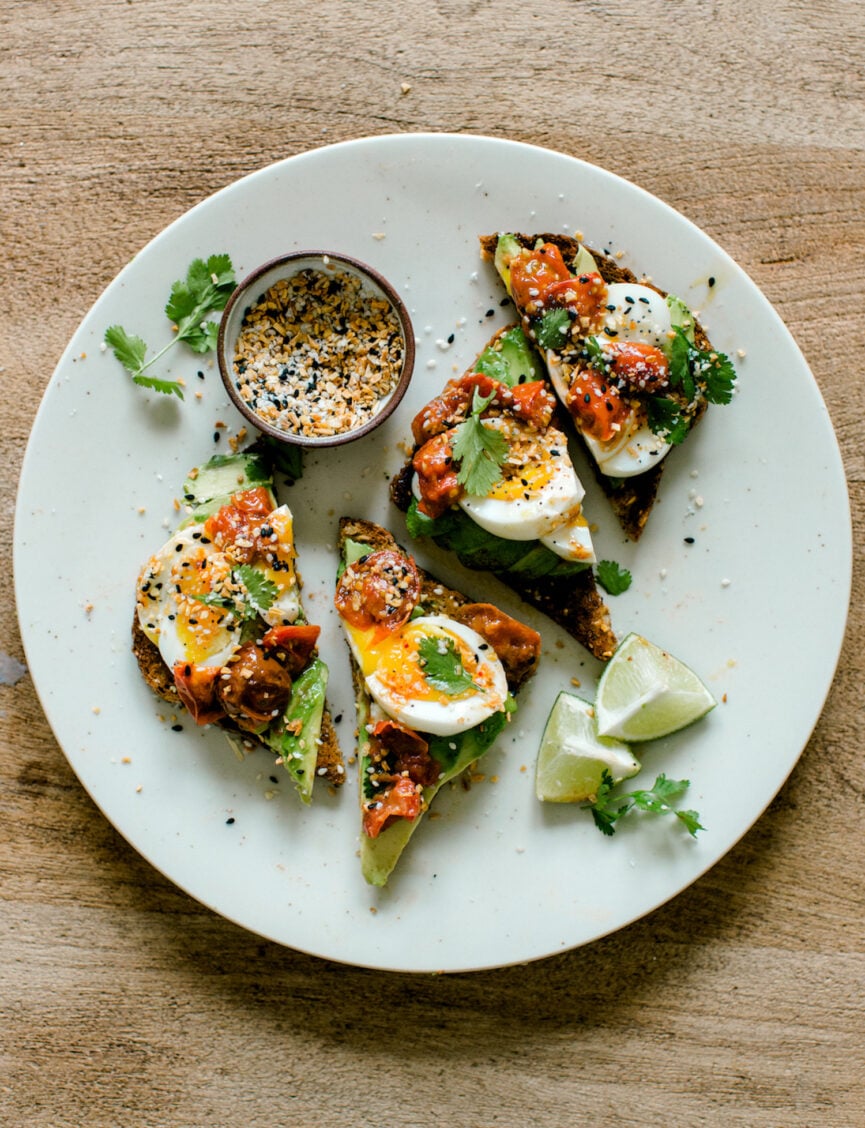
Avocado Toast with a Jammy Egg
Why We Love It: What at first might seem like an oversight on this writer’s part is actually the most genius trick in the game. A slice of avocado toast is a snack that’s sure to brighten anyone’s afternoon—and this one is made all the better (and boasts a boost of protein) thanks to the jammy egg. It defines deliciousness and can be jazzed up or made simpler thanks to its endless customizability.
Hero Ingredient: Is there anything more satisfying than popping open a perfect avocado?
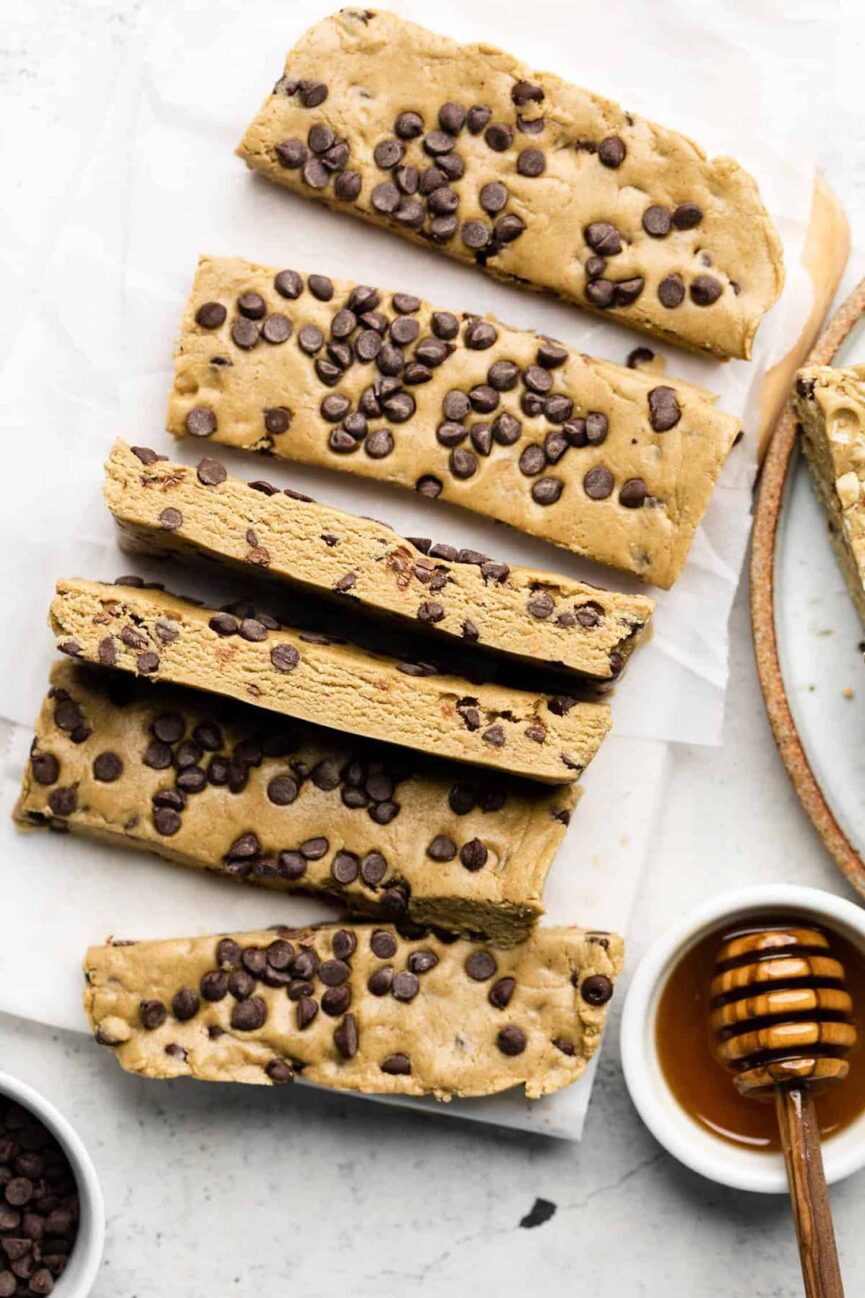
Copycat Homemade Perfect Bars from Erin Lives Whole
Why We Love It: When Perfect Bars took the snack world by storm a few years ago, you can bet I was on board. While some (most?) protein bars at the time were full of sugar and impossible-to-pronounce ingredients, Perfect Bars decided to disrupt the snack game, packing 20+ superfoods into every single bar. And while I love their convenience, oftentimes, I’ll take the homemade route versus picking something off the supermarket shelves. These are easy to make and even easier to devour. You’ll have no problem making it through the rest of your work day with one of these on hand.
Hero Ingredient: Honey not only holds everything together, but it makes these Perfect Bars perfectly sweet.
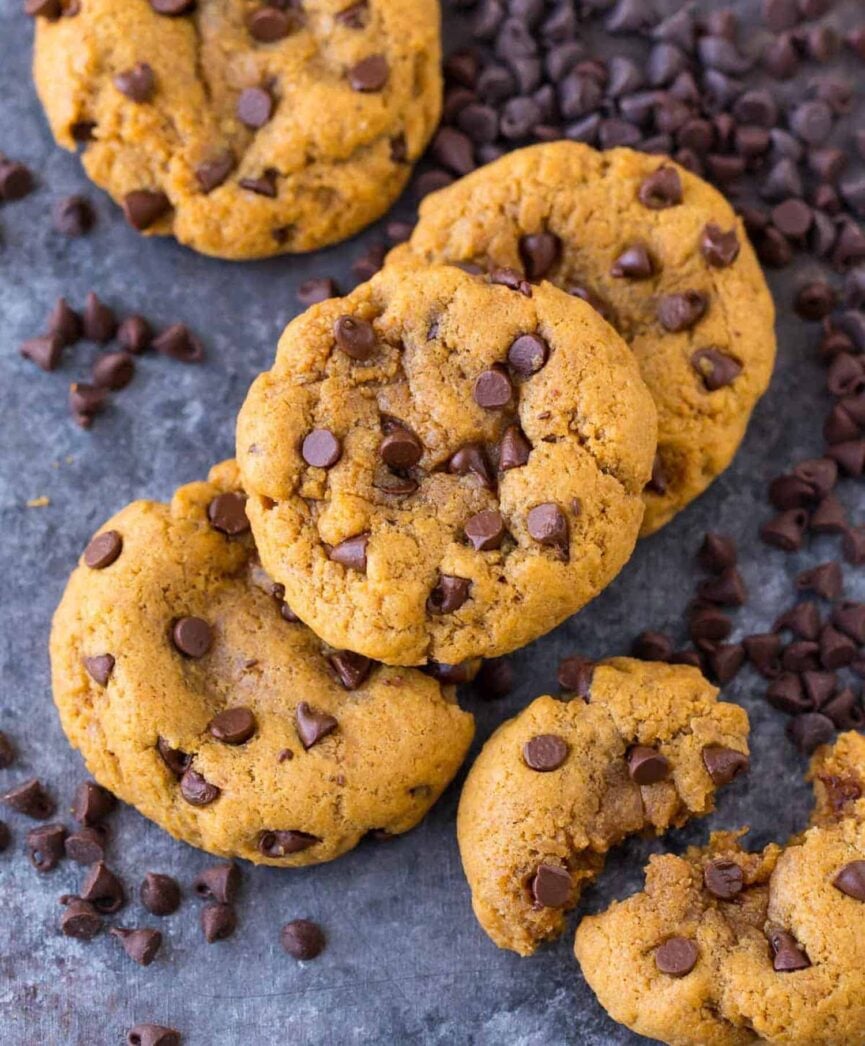
Peanut Butter Chocolate Chip Protein Cookies from Well Plated By Erin
Why We Love It: When it comes to cookies’ crave-worthiness and nutritional benefits, not all are created equal. Case in point, these PB and protein-packed delights. They’re budget-friendly and soft and chewy (hot take: all of the best cookies should be). Oh, and they only take one bowl to whip up. You’re welcome.
Hero Ingredient: The soft, chewy cookie I elaborated on above? You can thank the half-cup of creamy peanut butter for that.
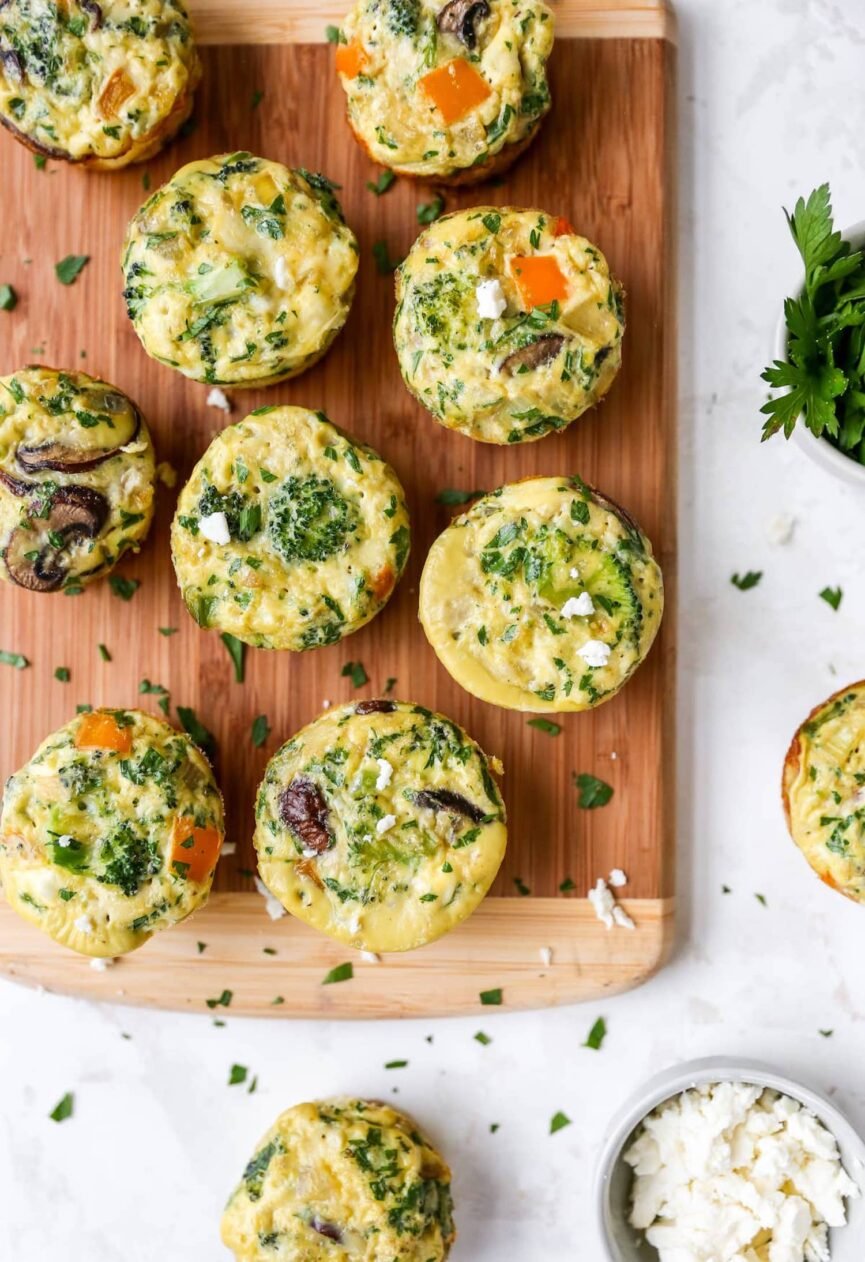
Baked Egg Muffins from Eating Bird Food
Why We Love It: When recipes for egg muffins started making their way around the internet, those focused on getting their fill of protein first thing rejoiced. Well, I’m here to say that you have my full permission to enjoy these in the afternoon as well. Actually, scratch that—you don’t need anyone to tell you that you can munch on these whenever you want. They’re simple to prep and easy to pop in a glass container to take with you to work.
Hero Ingredient: I’m of the opinion that feta cheese is always a yes. It’s salty, it’s tangy, and it holds its own in these eggy bites.
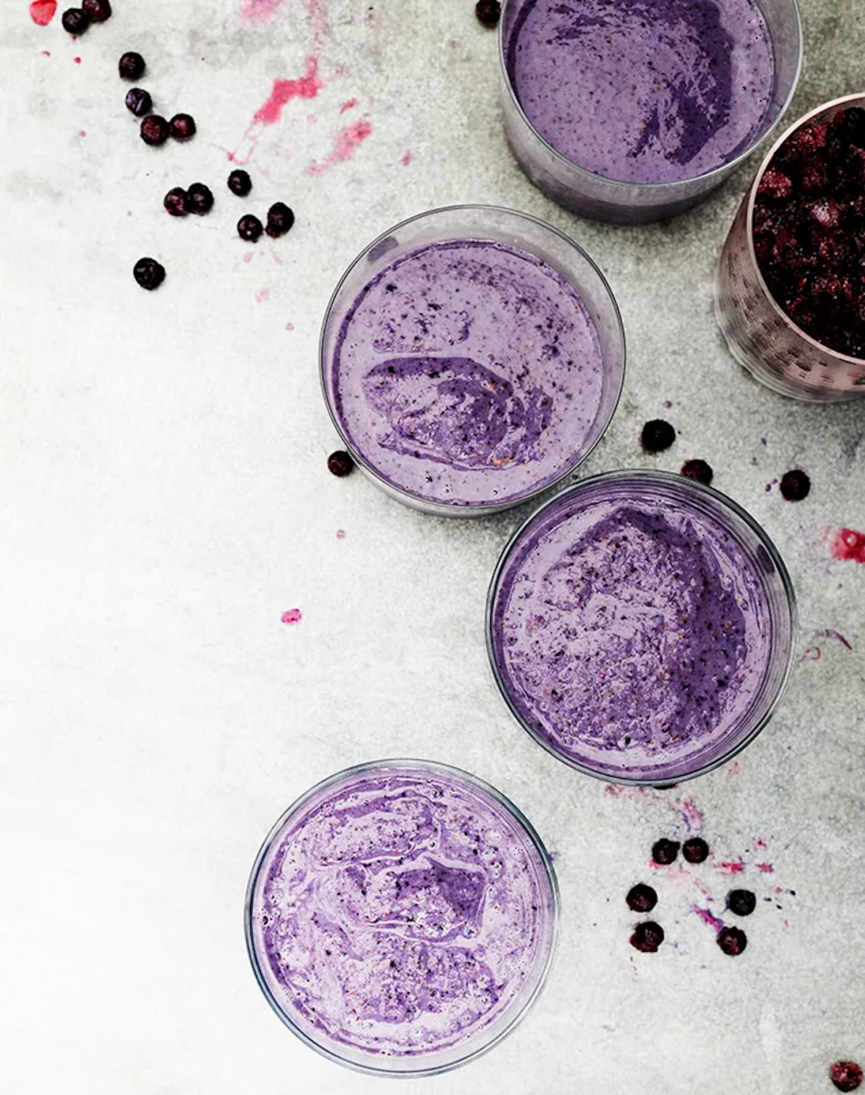
Blueberry Cauliflower Smoothie from Gwyneth Paltrow
Why We Love It: Whatever your stance on goop may be, it can’t be denied that Gwyneth’s got an enviable glow. Her secret to vibrant, healthy skin? This smoothie. Blueberries are the key to a clear complexion and the secret to making this smoothie a pretty purple delight.
Hero Ingredient: Protein-packed almond butter fills your cup with healthy fats.
-

 African History5 years ago
African History5 years agoA Closer Look: Afro-Mexicans 🇲🇽
-

 African History5 months ago
African History5 months agoBlack History Facts I had to Learn on My Own pt.6 📜
-

 African History5 years ago
African History5 years agoA Closer Look: Afro-Mexicans 🇲🇽
-

 African History1 year ago
African History1 year agoMajor African Tribes taken away during the Atlantic Slave Trade🌍 #slavetrade #africanamericanhistory
-

 African History1 year ago
African History1 year agoCameroon 🇨🇲 World Cup History (1962-2022) #football #realmadrid #shorts
-

 African History5 months ago
African History5 months agoBlack History Inventors: Mary Kenner 🩸
-

 African History1 year ago
African History1 year agoPROOF AFRICAN AMERICANS AIN'T FROM AFRICA DOCUMENTED EVIDENCE
-

 African History1 year ago
African History1 year agoNo African pre-Columbus DNA? 🤯🤯 #history #mesoamerica #mexico #african


























